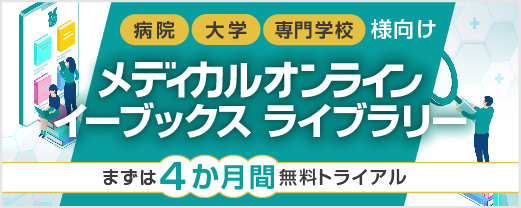アブストラクト
Japanese
| Title | 注意機能の変化をみる段階的作業課題とその利用 - 課題達成度の変化からみた注意機能の改善プロセスと臨床的推論 - |
|---|---|
| Subtitle | 実践報告 |
| Authors | 谷利美希*1, 寳珠山稔*2 |
| Authors (kana) | |
| Organization | *1中部大学生命健康科学部作業療法学科, *2名古屋大学大学院医学系研究科総合保健学専攻 |
| Journal | 作業療法 |
| Volume | 41 |
| Number | 1 |
| Page | 94-105 |
| Year/Month | 2022 / 2 |
| Article | 報告 |
| Publisher | 日本作業療法士協会 |
| Abstract | 「要旨:」注意機能をスクリーニングし, 日常生活活動能力の予後予測を含めた臨床的推論を簡易的に行うため, 注意障害の病態に基づいて段階づけた課題を設定した. 本研究は, 設定した課題達成度の変化を観察し, 既存の評価との関連性を検証した. 対象は発症2カ月以内に入院した脳卒中患者14名とした. 結果, 対象者の課題達成度および評価得点は有意に向上し, 課題達成度と神経心理学的検査および日常生活動作能力には有意な相関が認められた. 本研究で設定した課題の達成段階を目安にして, 注意機能の改善プロセスを概観し, 日常生活活動の達成度を推察できる可能性が示唆され, 対象者の注意機能に合わせた課題や場面設定をすることが可能と考えられた. |
| Practice | 医療技術 |
| Keywords | 注意障害, 回復過程, 臨床推論, Attention deficit, Recovery process, Clinical reasoning |
English
| Title | Stepwise tasks for patients with attention deficit : Improvement of attention function based on the change of the achievement level of the task, and clinical reasoning based on the stepwise task |
|---|---|
| Subtitle | PRACTICAL REPORTS |
| Authors | Miki Tanikaga*1, Minoru Hoshiyama*2 |
| Authors (kana) | |
| Organization | *1College of Life Health Sciences, Department of Occupational Therapy, Chubu University, *2School of Health Sciences, Faculty of Medicine, Nagoya University |
| Journal | JAPANESE OCCUPATIONAL THERAPY RESEARCH |
| Volume | 41 |
| Number | 1 |
| Page | 94-105 |
| Year/Month | 2022 / 2 |
| Article | Report |
| Publisher | JAPANESE ASSOCIATION OF OCCUPATIONAL THERAPISTS |
| Abstract | The purpose of this study was to facilitate screening of attentional functions and to simplify clinical reasoning including prognostic predictions of daily activity. We created and conducted stepwise tasks to observe the improvement process of the attention deficit for every achieved level. Subjects were 14 patients (6 males and 8 females, mean age: 74.9 (8.7) (SD)) with cerebrovascular diseases, admitted within 2 months of onset. Using the change of the achievement level of this task, we analyzed the improvement process of the attention function and the relationship between outcomes of the task and existing assessments and daily activity. As a result, the achievement level of the task and existing assessments scores of the subjects were significantly improved. In addition, achievement of the tasks in the initial and final stages significantly correlated with the initial and last scores of existing assessments and daily activity. The achievement level in this task suggested that we could infer an achievement level of daily activity in patients with attention deficits. The present study suggests that a program and scene setting on matching the level of individual attention deficits were possible. |
| Practice | Medical technology |
| Keywords | Attention deficit, Recovery process, Clinical reasoning |
- 全文ダウンロード: 従量制、基本料金制の方共に770円(税込) です。
参考文献
- 1) Loetscher T, Potter KJ, Wong D, das Nair R: Cogni-tive rehabilitation for attention deficits following stroke. Cochrane Database Syst Rev 2019(11): CD002842, 2019, doi:10.1002/14651858.CD002842.pub3.
- 2) Hyndman D, Pickering RM, Ashburn A: The influ-ence of attention deficits on functional recovery post stroke during the first 12 months after discharge from hospital. J Neurol Neurosurg Psychiatry 79(6): 656-663, 2008.
- 3) Coulthard E, Singh-Curry V, Husain M: Treatment of attention deficits in neurological disorders. Curr Opin Neurol 19(6): 613-618, 2006.
- 4) Gillen G, Nilsen DM, Attridge J, Banakos E, Morgan M, et al: Effectiveness of interventions to improve occupational performance of people with cognitive impairments after stroke: An evidence-based review. Am J Occup Ther 69(1): 6901180040p1-9, doi:10.5014/ajot.2015.012138.
- 5) Chun MM, Golomb JD, Turk-Browne NB: A taxon-omy of external and internal attention. Annu Rev Psychol 62: 73-101, 2011.
残りの28件を表示する
- 6) Sohlberg MM, Mateer CA: Effectiveness of an atten-tion-training program. J Clin Exp Neuropsychol 9(2): 117-130, 1987.
- 7) 山口晴保 : 注意障害と認知症. 認知症ケア研究誌 3 : 45-57, 2019.
- 8) Carli M, Invernizzi RW: Serotoninergic and dopami-nergic modulation of cortico-striatal circuit in exec-utive and attention deficits induced by NMDA re-ceptor hypofunction in the 5-choice serial reaction time task. Front Neural Circuits 58(8): 1-20, 2014.
- 9) Corbetta M: Functional connectivity and neurologi-cal recovery. Dev Psychobiol 54(3): 239-253, 2012.
- 10) Unsworth C, Baker A: A systematic review of pro-fessional reasoning literature in occupational ther-apy. Br J Occup Ther 79(1): 5-16, 2016.
- 11) Owen AM, Hampshire A, Grahn JA, Stenton R, Da-jani S, et al: Putting brain training to the test. Nature 465(7299): 775-778, 2010.
- 12) 種村留美 : 高次脳機能障害を有する人を支援するために. OTジャーナル 40(7) : 584-591, 2006.
- 13) Kanai R, Rees G: The structural basis of inter-indi-vidual differences in human behaviour and cognition. Nat Rev Neurosci 12(4): 231-242, 2011.
- 14) Holman C, de Villers-Sidani E: Indestructible plas-tic: The neuroscience of the new aging brain. Front Hum Neurosci 8: 219, 2014, doi:10.3389/fnhum.2014.00219.eCollection2014.
- 15) Gruzelier JH: EEG-neurofeedback for optimising performance. I: A review of cognitive and affective outcome in healthy participants. Neurosci Biobehav Rev 44: 124-141, 2014.
- 16) Kober SE, Schweiger D, Reichert JL, Neuper C, Wood G: Upper alpha based neurofeedback training in chronic stroke: Brain plasticity processes and cog-nitive effects. Appl Psychophysiol Biofeedback 42(1): 69-83, 2017.
- 17) Carter AR, Astafiev SV, Lang CE, Connor LT, Ren-gachary J, et al: Resting interhemispheric function-al magnetic resonance imaging connectivity predicts performance after stroke. Annals Neurol 67(3): 365-375, 2010.
- 18) Geranmayeh F, Brownsett SL, Wise RJ: Task-in-duced brain activity in aphasic stroke patients: What is driving recovery? Brain 137(10): 2632-2648, 2014.
- 19) 鈴木孝治 : 意識と注意. 鈴木孝治・編, 作業療法学 ゴールド・マスター・テキスト 高次脳機能障害作業療法学 第2版, 長崎重信・監修, メジカルビュー社, 2016, pp.64-65.
- 20) Perry RJ, Hodges JR: Attention and executive defi-cits in Alzheimer's disease: A critical review. Brain 122(3): 383-404, 1999.
- 21) Molholm S, Ritter W, Javitt DC, Foxe JJ: Multisenso-ry visual-auditory object recognition in humans: A high-density electrical mapping study. Cerebral Cortex 14(4): 452-465, 2004.
- 22) Driver J, Noesselt T: Multisensory interplay reveals crossmodal influences on 'sensory-specific' brain regions, neural responses, and judgments. Neuron 57(1): 11-23, 2008.
- 23) Gherri E, Eimer M: Active listening impairs visual perception and selectivity: An ERP study of audito-ry dual-task costs on visual attention. J Cogn Neu-rosci 23(4): 832-844, 2011.
- 24) Ro T, Hsu J, Yasar NE, Elmore LC, Beauchamp MS: Sound enhances touch perception. Exp Brain Res 195(1): 135-143, 2009.
- 25) Elliott MT, Wing AM, Welchman AE: Multisensory cues improve sensorimotor synchronisation. Eur J Neurosci 31(10): 1828-1835, 2010.
- 26) Duncan J: EPS Mid-Career Award 2004: Brain mech-anisms of attention. Q J Exp Psychol 59(1): 2-27, 2006.
- 27) Johansson B, Tornmalm M: Working memory train-ing for patients with acquired brain injury: Effects in daily life. Scand J Occup Ther 19(2): 176-183, 2012.
- 28) Silsupadol P, Shumway-Cook A, Lugade V, Donkelaar P, Chou LS, et al: Effects of single-task versus du-al-task training on balance performance in older adults: A double-blind, randomized controlled trial. Arch Phys Med Rehabil 90(3): 381-387, 2009.
- 29) Mozolic JL, Hayasaka S, Laurienti PJ: A cognitive training intervention increases resting cerebral blood flow in healthy older adults. Front Hum Neurosci 4: 16, 2010, doi:10.3389/neuro.09.016.2010.eCollection 2010.
- 30) Dux PE, Tombu MN, Harrison S, Rogers BP, Tong F, et al: Training improves multitasking performance by increasing the speed of information processing in human prefrontal cortex. Neuron 63(1): 127-138, 2009.
- 31) Fagioli S, Macaluso E: Attending to multiple visual streams: Interactions between location-based and category-based attentional selection. J Cogn Neuro-sci 21(8): 1628-1641, 2009.
- 32) Hashimoto N: The use of semantic- and phonologi-cal-based feature approaches to treat naming deficits in aphasia. Clin Linguist Phon 26(6): 518-553, 2012.
- 33) 鷲見幸彦 : 認知症と地域連携 3. 認知症初期集中支援チームについて. 日老医誌 52(2) : 138-146, 2015.


